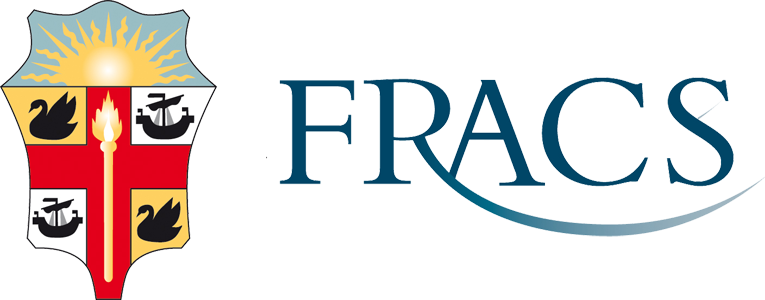Lumbar Decompression
What is Lumbar Decompression?
Lumbar decompression is a type of surgery to relieve pain caused by nerve root pinching. This pinching can occur for various reasons, including a herniated disc, spinal stenosis, or a tumour.
Lumbar decompression surgery aims to relieve pain, numbness, tingling, or weakness in the legs and lower back.
Who is Suitable for Lumbar Decompression?
The main reason for performing this operation is lumbar stenosis, where there is pressure on the lumbar nerves, causing problems with walking and standing, pain in the legs, reduced balance and problems with bladder function. Sitting or lying down can relieve these symptoms.
There may be an associated slip of one vertebra on another, called spondylolisthesis.
Wear and tear in your back (spondylosis) causes the small joints (facet joints) holding the vertebrae together at the back to thicken (facet arthropathy). This is associated with disc bulging and thickened ligaments, causing narrowing (stenosis) of the vertebral canal containing the nerves.
Benefits of Lumbar Decompression
- Pain Relief: Lumbar decompression surgery can significantly reduce or eliminate chronic back and leg pain that has not responded to non-surgical treatments.
- Improved Mobility: Patients often experience increased mobility with alleviating pain, enabling them to return to daily activities and live more actively.
- Decreased Reliance on Pain Medication: Successful lumbar decompression surgery can lessen the need for long-term use of pain medication, which can have various side effects when used chronically.
- Improved Quality of Life: Lumbar decompression can enhance a patient's overall quality of life by relieving chronic pain and improving mobility.
Types of Lumbar Decompression
There are different types of lumbar decompression surgeries, including:
- Laminectomy: This is the most common type of lumbar decompression surgery. It involves removing the part of the vertebra that covers the spinal canal (the lamina) to create more space for the nerves.
- Microdiscectomy: This procedure involves removing a portion of a disc to relieve pressure on a nerve.
- Foraminotomy: This procedure involves enlarging the foramen (the opening for the nerve roots to exit the spinal canal) to increase the size of the nerve pathway.
- Laminoplasty: This is mostly performed on the neck (cervical spine). It opens up space within the spinal canal by creating a hinge on the lamina.
- Facetectomy: This procedure involves removing a facet joint that is causing nerve compression.
Lumbar Microdiscectomy
Lumbar microdiscectomy is an operation to trim/remove a disc prolapse or disc fragment, which is compressing a nerve in the lower back supplying the leg.
Who is Suitable for Lumbar Microdiscectomy?
- Lumbar radicular pain (sciatica)
- Lumbar radiculopathy (leg pain, numbness & weakness)
- Cauda equina syndrome (pressure on the nerves supplying the bladder, bowel and genital region). This causes problems with passing urine, incontinence and numbness around the genitals & buttocks.
- Lumbar microdiscectomy is intended to relieve leg pain and weakness.
Lumbar Microdiscectomy Prognosis
Microdiscectomy has an 80 - 90% success rate for improvement in leg pain, numbness and weakness. The outcome is lower depending on the severity and how long you have had the signs and symptoms before having the operation. 10% of patients experience no change in symptoms.
If cauda equina syndrome is present, surgery should be performed urgently. Even with surgery, complete recovery can not be guaranteed.
Lumbar Microdiscectomy Risks
2% risk of the following:
- Infection, bleeding, CSF leak (fluid leak from the nerve lining)
- Nerve root damage causing leg numbness and weakness
- Recurrent disc prolapse (usually occurs within the first four weeks postoperatively)
General medical risks associated with surgery:
- General anaesthesia complications and drug reaction
- Blood clots - DVT (legs) & pulmonary embolus (lungs)
- Pneumonia
- Urinary tract infection
- Heart attack and stroke
- Death
Preparation for Lumbar Microdiscectomy
Tell Mr Malham about any medical conditions or previous operations. Suppose you have a medical condition such as diabetes, heart problems, high blood pressure or asthma. In that case, Mr Malham may arrange for a specialist physician to see you for a pre-operative assessment and medical care following the neurosurgery.
Inform Mr Malham of the medication you are taking and/or have allergies to medications. You must stop using the following ten days pre-operatively:
- Aspirin
- Plavix
- Isocover
- Asasantin
You must stop using blood thinning medication (such as Warfarin) 3-5 days pre-operatively.
Lumbar Microdiscectomy Procedure
The operation is performed under general anaesthesia.
Checked by an intraoperative x-ray with the skin marked. The skin is cleaned with antiseptic and is made numb with a local anaesthetic.
A skin incision is made, followed by dissection between bone and back muscles, allowing a tube retractor to be inserted, holding the muscles out of the way. The correct spine level is checked with an intraoperative X-ray.
Under the microscope, a special drill is then used to make a small bone opening, allowing exposure to the compressed nerve. The bony opening where the nerve exits the spine is widened, allowing the disc prolapse/disc extrusion compressing the nerve root to be trimmed/ removed. Any further damaged disc is removed from the disc space, freeing the nerve root from compression. A healthy disc is left.
A dissolvable pad called Gelfoam is soaked in local anaesthetic and anti-inflammatory steroids and placed over the nerve to reduce inflammation and bruising.
The lining around the muscles is closed with dissolvable stitches, and the skin is closed with dissolvable sutures. A wound dressing is applied.
You are then taken to recovery.
After Lumbar Microdiscectomy
You are carefully watched in the recovery ward for 1 hour after the operation, then transferred back to the neurosurgery ward. Your breathing, heart rate, blood pressure and leg strength will be monitored. Your bowel sounds are also monitored to indicate that your stomach & intestines are working again. You may feel sick or vomit if you drink or eat too early.
You can leave the bed the next day and walk around the ward with the nurses and physiotherapists. You will be discharged home once comfortable walking independently, normally 4-5 days after the operation.
Pain relief usually comes in the form of regular tablets. You will be provided with a prescription on discharge from the hospital.
You may require rehabilitation as an inpatient or outpatient to help your recovery. This will be discussed with you, if appropriate, before your surgery.
Leg pain, numbness and weakness will slowly improve over the next four weeks after the surgery. Of course, this depends on the severity and duration of your symptoms before the operation.
Recovery at Home
It is preferred that you do not drive until your post-operative appointment. You may travel as a passenger with the seat reclined to 30 degrees for up to 20 minutes. Be careful getting in and out of the car.
Do not perform bending/twisting activities or heavy lifting.
No sitting, standing or walking for longer than 30 minutes each time. You will be encouraged to walk 3-4 short walks daily (building up with time & distance) for up to 30 minutes each.
Mr Malham will review you in the consulting rooms four weeks following the operation to assess your progress. Return to work timing will be discussed.
Lumbar Laminectomy
Lumbar laminectomy is an operation to decompress nerves supplying the legs, bladder, bowel and genital region by removing the lamina from the bone.
Who is Suitable for Lumbar Laminectomy?
- Neurogenic claudication - Pain in legs with walking and standing. Walking/standing distance/ time gradually decreases. Often requires bending forward or sitting for relief.
- Degenerative changes (wear & tear) – Usually caused by disc bulges because of loss of height with age, ligamentum flavum (yellow ligament) between the laminae infolds and facet joints (which provide stability) thicken.
- Once symptoms interfere with normal daily activities and don’t respond to other treatments, i.e. epidural steroid injections, surgery can be considered.
Lumbar Laminectomy Prognosis
A laminectomy has a 70 - 80% success rate for improvement in leg pain, numbness, weakness, walking distance and standing time. The outcome is lower depending on the severity and how long you have had the signs and symptoms before having the operation. 20% of patients experience no change in symptoms.
Lumbar Laminectomy Risks
3-5% risk of the following:
- Infection, bleeding, CSF leak (fluid leak from the nerve lining)
- Nerve root damage causing leg, bladder, bowel & genital region numbness and weakness
- Recurrent stenosis
- Iatrogenic instability (vertebrae instability) requiring fusion surgery at a later date
General medical risks associated with surgery:
- General anaesthesia complications and drug reaction
- Blood clots - DVT (legs) & pulmonary embolus (lungs)
- Pneumonia
- Urinary tract infection
- Heart attack and stroke
- Death
Alternative Options to Lumbar Decompression
Before considering surgery, various non-surgical treatments are typically attempted. These may include:
- Physical Therapy
- Medication
- Lifestyle Changes
- Chiropractic Care
- Acupuncture
- Spinal Cord Stimulation
- Interventional Procedures
Preparation for Lumbar Laminectomy
Tell Mr Malham about any medical conditions or previous operations. Suppose you have a medical condition such as diabetes, heart problems, high blood pressure or asthma. In that case, Mr Malham may arrange for a specialist physician to see you for a pre-operative assessment and medical care following the neurosurgery.
Inform Mr Malham of the medication you are taking and/or have allergies to medications. You must stop using the following ten days pre-operatively:
- Aspirin
- Plavix
- Isocover
- Asasantin
You must stop using blood thinning medication (such as Warfarin) 3-5 days pre-operatively.
Lumbar Laminectomy Procedure
Operative Time is 1.5 – 2.5 hours.
The operation is performed under general anaesthesia.
You may have a catheter inserted into your bladder. You are positioned face down on a special operative frame. The level of operation is checked by an intraoperative x-ray with the skin marked. The skin is cleaned with antiseptic and is made numb with a local anaesthetic.
A skin incision is made, followed by dissection between bone and back muscles, allowing a tube retractor to be inserted, holding the muscles out of the way. The correct spine level is checked with an intraoperative X-ray.
Under the microscope, the spinous process bone (purely for muscle attachment) is removed, allowing the thickened laminae and infolded yellow ligament to be removed. The nerve roots are decompressed in each of their existing foramen (bone holes). This decompresses the cauda equina and nerve roots in the back.
After Lumbar Laminectomy
You are carefully watched in the recovery ward for 1 hour after the operation, then transferred back to the neurosurgery ward (4 Cato or 4 Lee). Your breathing, heart rate, blood pressure and leg strength will be monitored. Your bowel sounds are also monitored to indicate that your stomach & intestines are working again. You may feel sick or vomit if you drink or eat too early.
You can leave the bed the next day and walk around the ward with the nurses and physiotherapists. You will be discharged home once you are comfortable walking independently, normally 4-5 days after the operation.
Pain relief usually comes in the form of regular tablets. You will be provided with a prescription on discharge from the hospital.
You may require rehabilitation as an inpatient or outpatient to help your recovery. This will be discussed with you, if appropriate, before your surgery.
Leg pain, numbness and weakness will slowly improve after the surgery over the next 4-12 weeks.
Recovery at Home
It is preferred that you do not drive until your post-operative appointment. You may travel as a passenger with the seat reclined to 30 degrees for up to 20 minutes. Be careful getting in and out of the car.
Do not perform bending/twisting activities or heavy lifting.
No sitting, standing or walking for longer than 30 minutes each time. You will be encouraged to walk 3-4 short walks daily (building up with time & distance) for up to 30 minutes each.
Mr Malham will review you in the consulting rooms four weeks following the operation to assess your progress. Return to work timing will be discussed.
Hospital Stay
- 2-4 days Microdiscectomy
- 4-6 days Laminectomy
Wound Care
Your lumbar wound will be covered with a waterproof dressing. This means that you can shower & bathe as normal. If water gets under the dressing, it should be removed and replaced. The waterproof dressing can be removed after seven days.
The wound will be raised and slightly red initially. This is because the sutures under the skin (subcuticular) are dissolvable. These usually dissolve 60-90 days after surgery. The scar will then start to flatten and narrow, and the redness will settle.
If the wound is uncomfortable and irritated, you can apply moisturiser, Bio-Oil or Vitamin E Cream to help soothe the irritation.
4 Weeks Post Surgery
You should not drive but can travel as a passenger in the car with the seat reclined to 30 degrees. You will have a restriction on sitting, standing, walking and lying down for 30 minutes each episode, when you will then change your position. Ensure you avoid bending and twisting, and always keep your back straight. Do not lift greater than 5kg.
You should undertake light exercise with walking. Your walks should be kept in line with the 30-minute rule and performed 3-4 times/day. Mild discomfort and residual leg pain or numbness are common in the first few weeks. Please take pain relief if required.
Post-operative Appointment
You will receive a post-operative appointment six weeks after your surgery to see Mr Malham. Further instructions regarding rehabilitation and return to work plans will be given at the appointment.
Most patients resume light duties/activities from 6-8 weeks, moderate duties/activities from 12 weeks and full/normal duties/activities from 6-12 months postoperatively.
What if Lumbar Decompression is Delayed?
If lumbar decompression surgery is delayed, the patient may continue to experience pain, which can interfere with daily activities and quality of life. Symptoms such as numbness, tingling, or weakness in the legs or arms can worsen over time.
If nerve compression is severe or prolonged, it can lead to permanent nerve damage.
If pain and discomfort increase, mobility can decrease over time, leading to a more sedentary lifestyle and associated health risks.
Please note that deciding to have surgery is a complex decision that must be made with a neurosurgeon. The decision will consider the severity of symptoms, the risks and benefits of surgery, and the patient's overall health.



